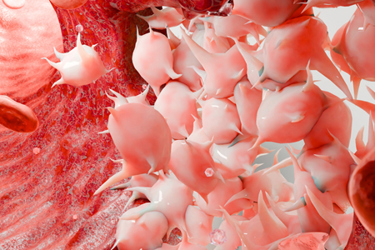Geometric Determinants Of Full-Thickness Wound Healing In Adult Male Yucatan Miniature Swine
By David White, Tim Madsen, Alain Stricker-Krongrad, and Guy Bouchard

Our objective was to obtain quantitative data on the relationship between wound healing rates and the initial size and shape of full-thickness wounds. To achieve this, we created nine full-thickness paraspinous wounds on each of three adult male Yucatan miniature swine, using all combinations of three wound sizes (10, 20, and 30 cm²) and three shapes (square, circle, and equilateral triangle with the apex pointing to the spine). Dressing changes were performed three times per week for seven weeks, then weekly until study termination. During each dressing change, wounds were photographed, and planimetric measurements of perimeter, total wound area, and epithelialization area were recorded. Time to complete healing was determined through clinical observation and photographic documentation.
Results showed that while larger wounds required more time to heal than smaller ones, wound shape had no significant impact on healing duration. Specifically, the average healing times for 10 cm² wounds were 33, 35, and 33 days for circles, squares, and triangles, respectively. Absolute wound healing rates, calculated using planimetric data, demonstrated a strong correlation between healing rate and initial wound area, with mean healing rates of 2.1, 2.6, and 3.3 cm² per week for 10, 20, and 30 cm² wounds, respectively. These differences were not influenced by wound shape.
Linear healing rates were determined by analyzing changes in planimetric measurements of area and perimeter using the following formula:
Linear Healing Distance (cm) = (Change in area from Day X to Day Y in cm²) / (Mean of Day X and Day Y perimeters in cm)
Linear Healing Rate = Linear healing distance per unit of time (day, week, etc.)
Ultimately, the findings indicate that linear healing rates in adult Yucatan miniature swine were largely unaffected by initial wound size or shape. These results validate the suitability of this model for preclinical wound healing studies, reinforcing its value for future research in cutaneous healing.
Get unlimited access to:
Enter your credentials below to log in. Not yet a member of Drug Discovery Online? Subscribe today.
